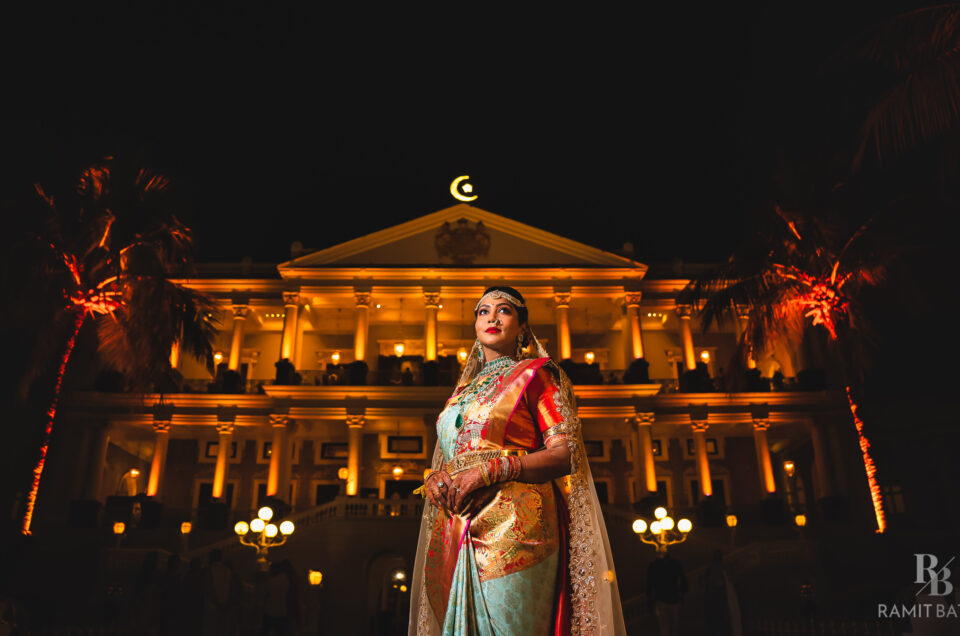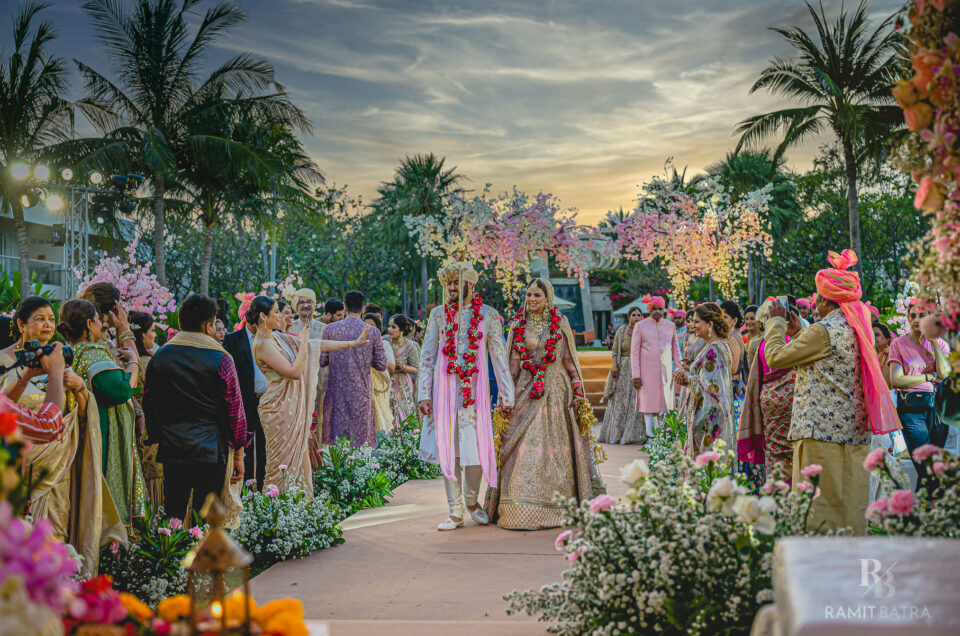When we think about weddings, all we talk about is the bride and the groom (well, mostly the former), their clothes for every event, the accessories, preparation for the big day, etc, etc. Weddings are also an occasion for both the families involved to unite. Though most of the main events embark the journey of the bride and groom together, there are certain rituals which take part – as a subset of the main ceremonies and are just as important. All these light hearted activities really bring out the fun side of the big fat Indian wedding! During a wedding all you get to hear about is the haldi, mehendi, sangeet & feras – here’s a detour that would take you beyond the ‘saat-pheras’ and we begin with the chooda & kaleerey ceremony!
Chooda and Kaleerey ceremony is a significant ceremony in a Punjabi wedding. The chooda is possibly the most important accessory that a bride wears during her wedding. It is worn for a period of 40 days to 1.5 years, as per the choice of the bride. These are a set of 21 red and white bangles – which are believed to bring good luck to the newlyweds. The chooda is bought by the bride’s maternal family. Traditionally, it is believed to be inauspicious if the bride sees her chooda before the wedding. Therefore, she closes her eyes when the chooda is being put and then it is covered with a cloth until the wedding.
It is accompanied by the beautiful kaleerey which are essentially umbrella shaped metal hangings tied to the chooda.

A traditional three-tier kalire tied to the chooda

This beautiful bride had quite an elaborate chooda!
These are tied by the brides’ sisters and friends to wish her luck and remind her of them when she leaves them post bidaai.


The bride’s friends tying the Kaleerey onto her chooda. View their Backyard wedding in California USA here
This is the sentimental part of the function. Now after the bride wears her chooda and the kaleerey are tied to the chooda properly, she shakes her hands on the heads of unmarried girls present. It is believed that if any part of the kalire falls on the unmarried girl then she’ll be the next in line to get married. It is like a Hindu equivalent of the English bride trowing her bouquet. The unpredictability of this event is its best part!


One of the bride’s friends taking a part in the ceremony.
Well, even though its fair for you to not believe in the legitimacy of this ritual, we got clean bowled at what happened after this. This girl actually did get married next. Do you know what’s even more crazy? The same thing got repeated at her chooda-kaleerey ceremony too. The girl on whose head the kaleerey got dropped got married next. How do we know? We captured both their weddings too! Check out Mitu’s Destination wedding in Jaipur (Mitu is the Girl who got Kaleerey dropped on her head in the picture above).
The Chooda & Kaleerey ceremony can be really emotional. It almost feels like the bride is breaking all old ties and starting a completely new life. The feeling of anxiousness and just wanting time to stop at that moment. There have been times when it almost felt as if everyone was bidding her away and she almost didn’t want to go. The ceremony definitely makes it difficult for everyone to control their tears!













Leave a reply
so good
Marriage makes us more responsible and disciplined. Because marriage is a commitment, where each one has a role to play for the happiness of both, this same commitment makes them assume life with greater maturity. While a single person does not have much to think about when changing work, city or country, the married person has to take it with great care and responsibility, since he thinks, not only of him, but of his whole family.
Fantastic post! Thank for sharing this lovely moment with us..
I’d like to know something
This ceremony is usually done the morning of the wedding so if one of the kaleeri drops does the bride wear it like that at the wedding? Won’t it be uneven?
Yea, actually it is supposed to be like that. It is meant to get entangled and fall.
But these days, brides get a proper ‘designer’ kaleera (one big piece each) on both hands – and the ceremonial kaleera which can fall down, is also added separately. WIN-WIN for both – aesthetics & traditions.
Hope I was able to answer your question.